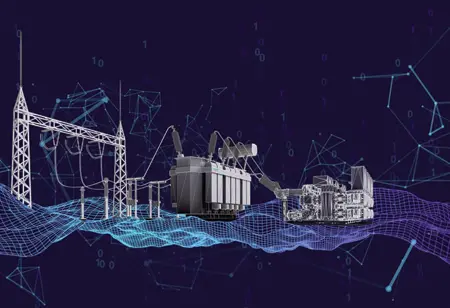Thank you for Subscribing to Electrical Business Review Weekly Brief
I agree We use cookies on this website to enhance your user experience. By clicking any link on this page you are giving your consent for us to set cookies. More info
Empowering Modern Life: The Crucial Role of Electrical Distributors and Suppliers
A Complex Network: Navigating the Electrical Supply Chain The electrical supply chain weaves a sophisticated web involving manufacturers, distributors, and end-users.

By
Electrical Business Review | Monday, January 08, 2024
Stay ahead of the industry with exclusive feature stories on the top companies, expert insights and the latest news delivered straight to your inbox. Subscribe today.
The electrical distribution industry grapples with challenges such as surging energy costs, supply chain disruptions, and online retail competition. To stay competitive, distributors must embrace technology, prioritise customer service, and develop niche expertise
FREMONT, CA: Electricity, a cornerstone of modern life, powers our homes, fuels industrial processes, and lights our streets. Yet, the journey of this vital energy involves an often-overlooked group of professionals: electrical distributors and suppliers. These unsung heroes ensure the seamless flow of electrical components, maintaining the illumination and power that define our world.
A Complex Network: Navigating the Electrical Supply Chain
The electrical supply chain weaves a sophisticated web involving manufacturers, distributors, and end-users. Manufacturers produce crucial electrical components and equipment, from wires to circuit breakers. Distributors act as the bridge, maintaining a diverse inventory and offering essential services like logistics and warehousing, technical expertise, and value-added services such as custom wire cutting and on-site support.
Meeting Varied Needs: Catering to a Diverse Range of End-Users
Distributors cater to diverse end-users with unique needs, including construction companies, electricians, industrial facilities, and even individual consumers. Construction demands a continuous supply of electrical components, electricians rely on distributors for installations and repairs, industrial operations depend on a steady supply of electrical equipment, and homeowners and small businesses seek distributors for various electrical products.
The Impact of Technology: Revolutionising the Distribution Landscape
Technology rapidly transforms the electrical distribution industry. Online platforms, inventory systems, and digital tools streamline operations, while innovations like smart grids and the Internet of Things (IoT) present new opportunities for data-driven solutions and improved energy efficiency.
Facing the Future: Challenges and Opportunities
Despite its critical role, the electrical distribution industry faces challenges like rising energy costs, global supply chain disruptions, and online retail competition. To stay competitive, distributors must embrace technology, prioritise customer service, and develop niche expertise. Leveraging digital tools enhances efficiency and expands customer reach, while strong customer relationships and personalised support set distributors apart. Niche expertise, such as focusing on renewable energy or smart building solutions, allows distributors to create unique value propositions.
In Conclusion: Silent Backbone of the Modern World
Electrical distributors and suppliers serve as the silent backbone of the modern world, facilitating the seamless flow of electrical products that power our homes, businesses, and industries. As technology reshapes the industry, distributors embracing innovation and prioritising customer service are best positioned to thrive in the future.








